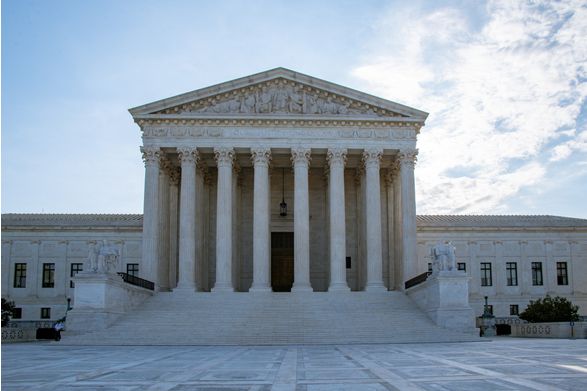The Supreme Court’s October 2019 Term is off to a huge start this week with cases on the docket that are important not only because of their political significance, but because the cases implicate fundamental separation of powers issues.
Tuesday, the Court heard Harris Funeral Homes, a case involving whether Title VII of the Civil Rights Act of 1964, which bars discrimination on the “basis of sex,” also applies to sexual orientation and gender identity. The justices will grapple with the text of that statute, along with history and precedent. As IWF’s amicus brief points out, Title IX, which governs high school athletics, and Title VII are interpreted in pari materia—thus, if the Court holds that Title VII also applies to sexual orientation and gender identity, Title IX’s purpose in protecting women’s athletics will be in jeopardy. Underlying all of these policy issues, is the question of who should decide the scope of federal anti-discrimination law: Congress or the federal courts.
In Espinoza v. Montana, the Court will have an opportunity to decide whether State Blaine Amendments, which forbid any state money from flowing to a “sectarian” school are unconstitutional. In the case, the Montana Supreme Court struck down a scholarship program because it allowed parents to choose a religious school for their child. The parents argue that Blaine Amendments violate the fundamental promise of neutrality enshrined in the First Amendment and that a State may not discriminate against a school by denying it an otherwise generally available benefit solely because of its religious status.
Also on the docket for the OT2019 term is a question over the legality of the Obama Administration’s Deferred Action for Childhood Arrivals program (DACA), and whether the Trump Administration was justified in rescinding that program on grounds of its illegality. This case implicates the broad question of which branch—Congress or the Executive—has the authority to make certain changes to immigration law.
New York State Rifle and Pistol Association v. City of New York is the Court’s first Second Amendment case in nearly a decade. The regulation at issue prohibited (the city has since rescinded the regulation) New York City residents from taking guns to a second home or a shooting range outside the city, even when those guns were unloaded and locked in cases separate from ammunition.
Finally, the Court will face its first case involving abortion since the retirement of Justice Kennedy. At issue is a Louisiana law that requires doctors at abortion clinics to have admitting privileges at nearby hospitals. The law is similar to a Texas law that the Court struck down by a 5-3 margin in 2016 in Whole Women’s Health. There are at least three possible outcomes: The Court could find, as did the Fifth Circuit below, that because of different facts, the Louisiana law does not impose an undue burden on women. Second, the Court could strike the statute down under Whole Women’s Health. Finally, the Court, with newly-minted Justices Kavanaugh and Gorsuch, could find that Whole Women’s Health was wrongly decided.


